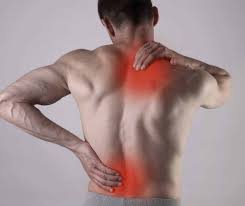From Pain to Peace: Effective Relief Strategies

Pain is an inevitable part of the human experience. Whether it’s physical, emotional, or psychological, everyone encounters pain at some point in their lives. However, what sets individuals apart is how they manage and alleviate this pain. In this article, we explore various effective relief strategies that can help individuals transition from pain to peace.
Understanding Pain
Before delving into relief strategies, it’s important to understand the nature of pain. Pain can manifest in different forms:
- Physical Pain: This includes acute pain from injuries or chronic pain from conditions like arthritis.
- Emotional Pain: Such as grief, heartbreak, or trauma that affects mental well-being.
- Psychological Pain: Which may involve stress, anxiety, or depression, impacting overall quality of life.
Each type of pain requires a tailored approach for effective relief.
Effective Relief Strategies
1. Physical Pain Relief
a. Medication and Treatments
- Over-the-counter (OTC) Medications: For mild to moderate pain relief, medications like acetaminophen, ibuprofen, or aspirin can be effective.
- Prescription Medications: Stronger medications such as opioids may be prescribed for severe pain, but caution is needed due to the risk of dependency.
- Physical Therapy: In cases of musculoskeletal pain, physical therapy can help strengthen muscles, improve mobility, and reduce pain.
b. Alternative Therapies
- Acupuncture: An ancient Chinese practice involving inserting thin needles into specific points on the body to alleviate pain.
- Massage Therapy: Helps relax muscles, improve circulation, and reduce tension and pain.
- Chiropractic Care: Focuses on the spine and musculoskeletal system to alleviate pain through adjustments.
2. Emotional and Psychological Pain Relief
a. Therapeutic Interventions
- Cognitive Behavioral Therapy (CBT): Helps individuals identify and change negative thought patterns contributing to emotional distress.
- Mindfulness and Meditation: Practices that cultivate present-moment awareness can reduce stress and promote emotional well-being.
- Support Groups: Connecting with others who have similar experiences provides validation, support, and coping strategies.
b. Self-care Practices
- Exercise: Regular physical activity releases endorphins, natural painkillers that also improve mood.
- Healthy Diet: Eating nutritious foods can reduce inflammation and support overall well-being.
- Adequate Sleep: Restorative sleep is crucial for physical and emotional healing.
3. Integrative Approaches
a. Holistic Therapies
- Herbal Remedies: Some herbs like turmeric, ginger, and lavender have anti-inflammatory and pain-relieving properties.
- Aromatherapy: Essential oils can be used topically or aromatically to alleviate pain and promote relaxation.
- Yoga and Tai Chi: Combining physical movement with mindfulness can improve flexibility, reduce pain, and enhance mental clarity.
b. Technology-based Solutions
- Biofeedback: Uses sensors to provide real-time information about physiological processes like muscle tension, helping individuals learn to control bodily responses.
- Virtual Reality (VR) Therapy: Immersive experiences can distract from pain and aid in rehabilitation.
4. Lifestyle Modifications
a. Stress Management
- Time Management: Organizing tasks and setting priorities reduces stress and prevents overwhelm.
- Relaxation Techniques: Deep breathing, progressive muscle relaxation, and guided imagery can induce relaxation responses.
b. Environmental Adjustments
- Ergonomic Improvements: Adjusting workstations or home environments to reduce strain and discomfort.
- Hydrotherapy: Using water for therapeutic purposes, such as hot baths or whirlpools, can soothe sore muscles and joints.
Implementing Relief Strategies
Choosing the right relief strategies often involves a combination of approaches tailored to individual needs and circumstances. It’s important to consult healthcare professionals for personalized guidance, especially when dealing with chronic or severe pain. Additionally, integrating strategies into daily routines promotes consistency and long-term benefits.
Conclusion
Moving from pain to peace is a journey that requires patience, experimentation, and perseverance. By understanding the nature of pain and exploring diverse relief strategies—from conventional treatments to holistic therapies and lifestyle adjustments—individuals can find effective ways to alleviate pain and improve their overall quality of life. Embracing a multidimensional approach empowers individuals to regain control, foster resilience, and ultimately achieve a sense of peace amidst life’s challenges.



